Gadgets & Gizmos: Summer of STEM (Week 2)
Join Science Buddies this summer for virtual summer camp! Each week, we'll highlight fun STEM themes for kids of all ages, including suggestions for simple hands-on activities, book picks, and more. We'll keep you inspired all summer with creative and innovative science and engineering activities — for free. This week: gadgets and gizmos for makers, inventors, and innovators.
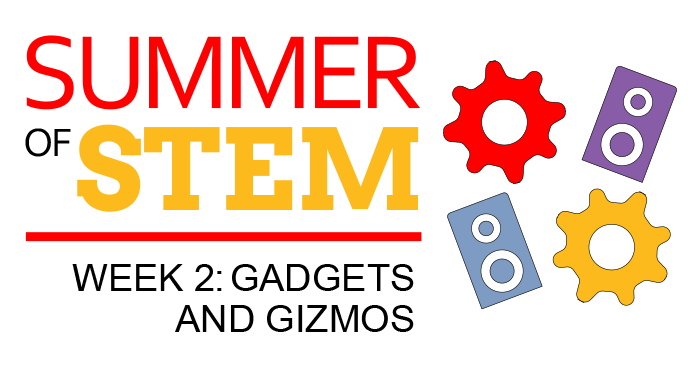
Gadgets & Gizmos Maker-style STEM
Some of the best toys and tools are ones you can make yourself! When kids combine creativity with engineering, they can design and build almost anything!
Is the bubble wand that comes in the bottle as good as it gets? Wouldn't a really, really long straw be more fun? Does someone you know need a way to hold or prop up a cell phone? What does a robot hand look like? Does it matter what it needs to do? These are all questions kids can explore this week!
This week's Gadgets and Gizmos theme features science and engineering activities that invite kids to explore gears, chain reactions, and the process of designing and making useful items like a phone stand and a back scratcher. These fun invention-based activities are creative, build confidence, and empower kids to see themselves as inventors, innovators, and engineers! This week's activities also use physics, electronics, and other STEM concepts!
Engineering projects and activities can offer hours of creative fun. Things may not always work out the first time, so young inventors may have to troubleshoot their devices and inventions and try again. Once something works, it's good to ask can it be even better? What changes or improvements could you make? Making things even better is part of the fun of engineering!
Creative young inventors might even find ways to connect the activities below to make even bigger chain reactions and fun Rube Goldberg-like machines!
Tip: This downloadable PDF contains a summary of the ideas for Week 2. Print this out and use it as a check-list for activities you try this week! You can also print and use our simple activity log (PDF) if you want to encourage your younger students to reflect on their activities.
ASK: Science Questions for Week 2
Use these questions to prompt conversation and reflection this week about the science behind designing, engineering, inventing, and improving gadgets and gizmos:
- Do you like to make and build things? Or do you prefer to experiment to see how things work?
- How is engineering a new product similar to conducting an experiment? How is it different?
- Sometimes engineers invent new things, and sometimes they improve existing things. What does it mean to innovate?
- Think about the last thing you built. Did your first attempt work out perfectly? If not, what did you do?
- After you build a product that works, is the engineering process finished? Why or why not?
- Which science or engineering activity did you try? What did you learn? What would you like to try next?
- Do you have an idea for a product you think would be really useful? Could you make it yourself? How would you start?
- What kinds of STEM jobs are related to designing and building new products and toys?
DO & EXPLORE: Gadgets & Gizmos Activities
- Gear Up Your Candy: make interlocking gears from plastic lids and candies. How many gears can you connect so that when one turns they all turn?
- Best Wand for Big Bubbles: what's the secret to making big bubbles? Make your own bubble wand and see what you can discover! (Tip: this activity will also help you find out what bubble solution works best!)
- A Really Long Straw: connect straws to make a really long straw. How long can it be and still work for drinking?
- Duplicate Your Drawings with a Pantograph: make this simple device and experiment to duplicate drawings at bigger and smaller sizes.
- Build a Robot Hand: build a robot hand from simple materials and see what kinds of objects it can and can't pick up. How many fingers does a robot hand need?
- Design a Back Scratcher: design your own useful back scratcher from materials around the house. What features are most important?
- Popsicle Stick Chain Reaction: setting your chain reaction up will take patience, but seeing it in action is super fun. How many sticks can you connect before you let it go? (Be sure and have someone ready to take a video as the sticks start to fly!)
- Build a Paper Speaker: use paper plates (or even paper cups) and make your own paper speaker with simple electronics parts. How loud does it get?
- Design a Cell Phone Stand: design and build your own cell phone stand. What features are most important for the way it will be used?
- Build A Wall Marble Run: this device isn't portable, but once you start building a wall marble run, you can continue to extend it, change it, and add new features over time. Why is it best to start as high on the wall as you can if you want to make a really big marble run?
- Make a Night-Light: with a few electronics parts, you can build your own intermediate circuit for a working night-light. How you design the holder for the light is the fun of making your very own personalized night-light. What will your night-light look like?
- Build an Electronic Piano with a Raspberry Pi: with the Raspberry Pi Projects Kit, kids interested in electronics and computer coding, can use Raspberry Pi and Scratch to make a fun keyboard piano that lights up and plays different sounds when different keys are pressed. (This is just one of a series of 8 interactive projects that use the Raspberry Pi Projects Kit!)
WATCH: Videos for Week 2
These videos demonstrate activities highlighted for Week 2's Gadgets & Gizmos theme:
The following video doesn't match an activity featured this week, but this fun (and glitter-filled!) video highlights the engineering spirit and the way engineering-minded people use their STEM skills to create devices for all kinds of reasons:
EXPLORE with KITS
The following Science Buddies Kits fit in with this week's Gadgets and Gizmos theme. These science and engineering kits provide the specialty materials kids need for a variety of fun explorations, including robotics, computer programming, and electronics:
- Raspberry Pi Projects Kit: with this kit, kids build their own Raspberry Pi computer (in 30 minutes or less!) and then combine Scratch and circuit-building to build interactive games and toys with a series of 8 guide activities from Science Buddies. (For families that already own a Raspberry Pi, the Circuit Building Kit for Raspberry Pi is available.)
- Bristlebot Robotics Kit: with this kit, kids explore introductory robotics and can build ArtBot, Brushbot and Bristlebot robots. Or, they can go freeform and design and build their own unique Junkbot robots using recycled materials.
- Crystal Radio Kit: use this kit to build a crystal radio and then experiment to see how many AM stations you can receive, how far they are from your location, and the radio frequency they are broadcasting on.
- Gauss Rifle Kit: the gauss rifle kit is a fun way to experiment with magnets and magnetic fields. Using ball bearings and magnets, kids build and experiment with a four-stage Gauss rifle. (Note: this is not a weapon. The Gauss rifle is an experiment about magnetism and momentum.)
Learn more about Science Buddies Kits and see our 12 Science Kits for Summer Science Experiments and Discovery recommendations.
READ: Books to Pair with Week 2's Gadgets and Gizmos Theme
- The Most Magnificent Thing by Ashley Spires
- Made by Maxine by Ruth Spiro (Author), Holly Hatam (Illustrator)
- What To Do With a Box by Jane Yolen (Author), Chris Sheban (Illustrator)
- Rube Goldberg's Simple Normal Humdrum School Day by Jennifer George (Author), Ed Steckley (Illustrator)
- Just Like Rube Goldberg: The Incredible True Story of the Man Behind the Machines by Sarah Aronson (Author), Robert Neubecker (Illustrator)
- Girls Think of Everything: Stories of Ingenious Inventions by Women by Catherine Thimmesh (Author), Melissa Sweet (Illustrator)
- Not a Box by Antoinette Portis
- Not a Stick by Antoinette Portis
- Nick and Tesla's Super-Cyborg Gadget Glove: A Mystery with a Blinking, Beeping, Voice-Recording Gadget Glove You Can Build Yourself
- Be a Maker by Katey Howes (Author), Elizabet Vuković (Illustrator)
- What Do You Do With an Idea? by Kobi Yamada (Author), Mae Besom (Illustrator)
- Have Fun, Molly Lou Melon by Patty Lovell (Author), David Catrow (Illustrator)
- Pop!: The Invention of Bubble Gum by Meghan McCarthy
- Toy and Game Projects: Making Slime, Flipping Bottles, and More (Unplug with Science Buddies®) by Megan Borgert-Spaniol (Author)
- I am Albert Einstein (Ordinary People Change the World) by Brad Meltzer (Author), Christopher Eliopoulos (Illustrator)
For other great STEM stories for summer reading, see our Book list for science-filled summer reading! post. Also, don't miss this roundup of creative STEM activities for storytelling and imaginative play.
Summer of STEM Posts
- Week 1 - Carnival Science
- Week 2 - Gadgets & Gizmos
- Week 3 - Wizards & Magic
- Week 4 - Artists & Makers
- Week 5 - Fireworks & Picnics
- Week 6 - Water Play
- Week 7 - Superhero Science
- Week 8 - Strange but True Science
- Week 9 - Mission to Mars
- Week 10 - Backyard Science
Categories:
You Might Also Enjoy These Related Posts:
- 12 Science Kits for Summer Science Experiments and Discovery
- Ready, Set, Go! (Awesome Summer Science Experiments)
- Awesome Summer Science Experiments
- Deep Dive into STEM—Do a Summer Science Project!
- Imagine Your Story - STEM Activities for Storytellers of All Ages!
- Carnival STEM (Awesome Summer Science Experiments)
- Wacky Water Science (Awesome Summer Science Experiments)
- Radiant Rainbows (Awesome Summer Science Experiments)


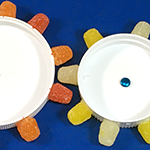
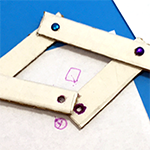
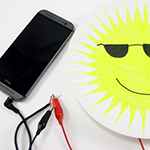
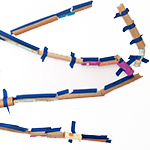
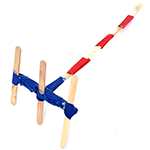
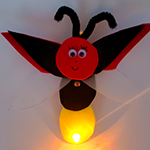

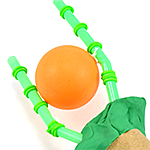





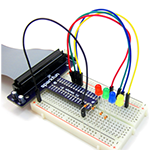
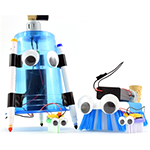
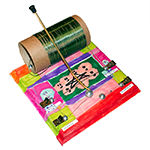
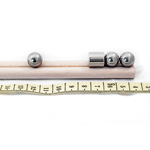






 >
>







